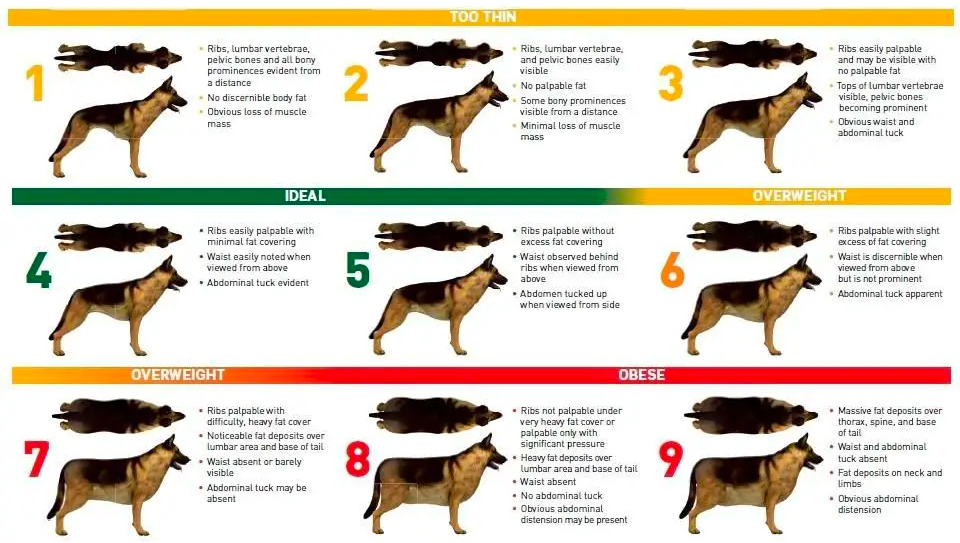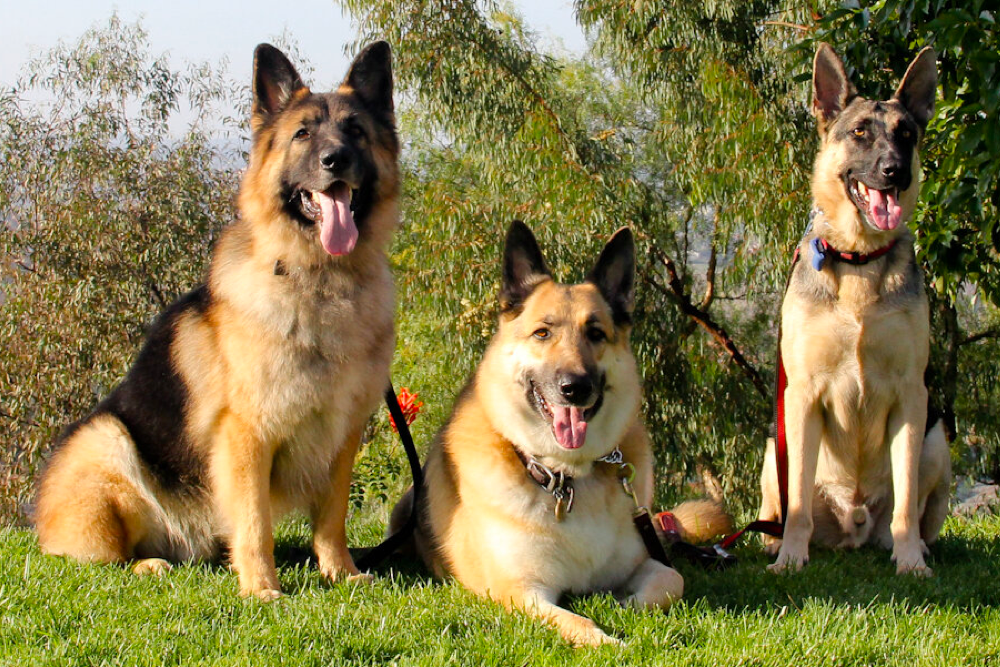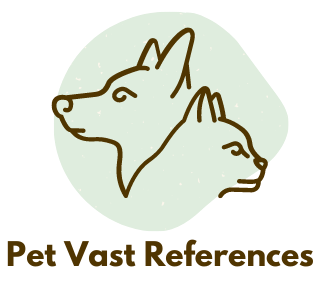Contents

Ideal Condition
Can you feel the ribs, but they are not pronouncedly visible? Can you see the waist when viewed from the top and the belly slightly tucked in when viewed from the side? If your answer s to both the quest is “YES”, then you are lucky, but you need to be very cautious so that you don’t end up enlisting to name in the two groups below.
Under-nutrition – Too thin
Are your dog’s ribs prominently visible? Can you see the vertebrae prominently?
Keeping your dog thin, fit, and healthy is important. The overly thin dog is not a healthy dog. There may be several reasons for your GSD to become too thin and seemingly underfed. While the commonest reason is malnutrition or underfeeding, there are other reasons as well when your German Shepherd may be getting thinner and thinner, despite feeding him an appropriate quantity of food. Even if you are feeding him adequate quantity, you may have to spare a thought over the quality of food. How much you are feeding your dog is important; What you are feeding him is equally important! Our German Shepherd Diet Management section will help you know more about diet and nutrition management for your German Shepherd.
Overly Fed – Overweight and Obese
Can’t you see your dog’s waist when viewed from the top? Does his belly seem rounded and a little bulged out when viewed sideways? If your dog is overweight you are not alone… rather you are among the huge mass of unfortunate pet owners who tend to keep their eyes closed to this issue. While feline holds the largest share of the obesity graph with around 57.6 percent, according to the 2013 pet obesity survey record 43.8 million dogs only in the US have been marked overweight or obese. Understanding the root of obesity in dogs is very important. German Shepherds, alike other breeds, get exposed to the risk of serious health conditions by becoming obese and overweight. Hence, it is primarily significant to keep your dog thin and fit – not underweight. Well-planned weight maintenance for your dog helps maintain healthy blood pressure, perfect heart condition, and desirable blood sugar, and promotes a longer, healthier life.
How to Keep your German Shepherd Dog Thin, Fit, and Healthy

Proper exercise accompanied by a balanced diet is the key to the success story. The best strategies to fight obesity and keep dogs healthy and thin include a perfect blend of three things:
a) Controlling of portion – Keep control over food. Overfeeding is as dangerous as underfeeding.
b) Balanced diets – A diet can be considered balanced if it contains the correct proportion of Proteins, Fats, Carbohydrates, Vitamins (A, C D, E, K & B complex vitamins), and Minerals. However, for any obese and/ or old dogs, these components may not be the same as for dogs having ideal health and young.
c) Correct type and amount of exercise – German Shepherd Dogs need adequate exercise to be mentally content and physically fit.
Type and Amount of Exercise for Your German Shepherd
Remember the type and amount of exercise for all breeds and ages are not the same. A multitude of factors has to be considered when it comes to exercising your GSD.
Is your GSD already overweight?
If so, you just cannot afford to put him in extensive exercise sessions all of a sudden. Start off with light healing, followed by slight trotting and then swimming. The time span for each exercise type may be set based on the health condition. Hydrotherapy is a great option to combat obesity in conjunction with the vet’s recommended diet chart.
Is your GSD still young?
For GSD a mistaken concept that has been prevailing for years is that a young pup must be having plenty of exercises. GSD is a fast-growing breed. Over-exercise may end in irreparable skeletal damage. Strains on joints and ligaments for a growing GSD can be desperately detrimental and will show several issues in adulthood. A young (less than 12-18 months of age) GSD should not be given prolonged trotting or other forms of extensive exercises. The general grammar of exercising your young shepherd is not plenty but adequate. For a young GSD puppy, the exercise must be very limited and restricted only to heel to medium trot for a limited span of time, and not brisk and prolonged exercise. “Natural Free Running At Its Sweet will (off leash) or Chasing a Ball” is a best-form exercise you your young German Shepherd puppy. Once the puppy grows older than 12 months the briskness and time span may be increased gradually, followed by swimming.
Is your GSD nearing 18 months or above?
Even after 12 months the exercise type and amount have to be moderated based on the health condition. If the joints are not yet completely matured you cannot afford to stress him out. You should still be slow and careful. Usually, a young GSD of around 12 to 18 months of age should be mature enough to start off with prolonged trotting. Balanced food and planned exercise will help a matured GSD to become absolutely able to trot long distances with consistency and stamina – not with speed. Remember, for a breed like German Shepherd Dog ‘stamina’ comes not only with balanced food and proper exercise, but the dog’s build or construction is another significant component that contributes to the prolonged trotting stamina. Correct angulation, size, and proportion are immensely important.
Food (quantity and quality) has the most important role to play here for a GSD to keep in great shape with adequate exercise.
‘Plenty’ vs ‘Adequate’ For Feeding and Exercising Your GSD
This holds equally good for both food and exercise. A German Shepherd is a working breed and thrives well with the right blend of food and exercise. Overfeeding and over-exercising are as detrimental as underfeeding and under-exercising your dog. Many novice owners think plenty of food and plenty of exercises can promote good health. The fact is not this. Adequate food and exercise are what he needs and moderation is important based on health, age, and condition – be it a companion dog, show dog, trailing, or agility dog! Plenty is Myth – Adequate is Grammar, be it for feeding or exercising your German Shepherds

 Top 10 Best German Shepherd Breeders in Alabama (AL)
Top 10 Best German Shepherd Breeders in Alabama (AL)